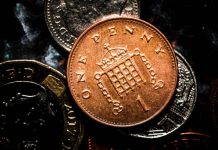In focus today
Today will be quiet on the data front, with no major releases scheduled.
The focus for remainder of the week will primarily be on US inflation for April, due Wednesday. Tuesday sees the release of US April PPI, which could give hints on the forthcoming CPI report. In Europe, the German ZEW survey for May is published on Tuesday, followed by euro area industrial production on Wednesday. Friday brings final April inflation data for the euro area, where we especially look out for what drove the still strong service inflation. In Scandinavia, Swedish inflation for April will be the one to watch. Turning to Asia, we get the first estimate of Japanese Q1 national accounts, and Chinese policy rate announcements on Wednesday and the fresh batch of monthly economic data on Friday.
Economic and market news
What happened overnight
The Bank of Japan sent a hawkish signal to markets by cutting the amount of Japanese government bonds it offered to buy in a routine operation. This marks the first cut since December. Specifically, the offer amounts for bonds maturing in 5-10 years was cut to 425 billion yen (USD 2.73 billion) from 475 billion yen at the previous operation on 24 April. The yen initially strengthened, but USD/JPY is currently trading around 155.78, while the 10-year JGB yield is up, hovering around 0.943%.
China’s finance ministry reported this morning that it begins selling long-term treasury bonds worth 1 trillion yuan (USD 138.23 billion) this week, with tenors ranging from 20 to 50 years). The initiative was first introduced some weeks ago during China’s parliamentary conference in March, and thus not surprising for markets. The funds raised through the issuance will support the rebuilding of disaster-hit areas and infrastructure improvement.
What happened over the weekend and Ascension Day
In the US on Friday, the Flash Michigan survey for May showed a weakening in consumer sentiment and higher inflation expectations. 1y inflation expectations climbed to 3.5%, the highest release since last November, and worryingly, it comes despite the recent downtick in oil prices. Additionally, on Thursday Atlanta Fed President Raphael Bostic (hawk and a voting member) stated that inflation would likely ease under the current monetary settings and allow the Fed to initiate its cutting cycle in 2024. On Friday, Fed official Lorie Logan (hawk and not a voting member) cautioned it is too early to think about rate cuts.
On the political front, the Biden administration intends to increase tariffs on Chinese vehicle imports from 25% to 100%. The initiative is part of an effort to safeguard American industry ahead of the US election and is expected to be announced tomorrow.
In Europe, the ECB minutes from last month’s meeting showed increased confidence in reaching 2% inflation and hinted at a potential rate cut in June. For instance, some ECB members already felt confident in a reduction of the policy rates at the April meeting, while the following was phrased in the minutes from Friday: “It was seen as plausible that the Governing Council would be in a position to start easing monetary policy restriction at the June meeting if additional evidence received by then confirmed the medium-term inflation outlook embedded in the March projections”.
In the UK, on Thursday, Bank of England (BoE) kept the Bank Rate at 5.25% as widely expected. Additionally, BoE delivered a dovish tweak to its communication, priming markets for an imminent start to a cutting cycle. We continue to pencil in the first 25bp cut in June.
In Sweden, on Wednesday the Riksbank delivered a 25bp cut in accordance with market expectations. Accordingly, the market reaction was muted. We had expected the Riksbank to wait until the June meeting before embarking on its cutting cycle. Thus, we remove our baseline forecast for 25bp in June, but maintain our profile for two 25bp cuts in September and December. For more information, please see Riksbank review – Start of a gradual cutting cycle, 8 May.
In Norway, inflation in April surprised somewhat to the upside, with headline inflation printing 3.5% y/y (0.9% m/m) and core inflation coming in at 4.4% y/y (0.9% m/m). That said, the underlying inflation, measured as a seasonally adjusted 3m moving average of the annualised m/m changes, stood unchanged at 2.8%, signalling that the disinflationary process clearly continues. Services prices excluding rent came in lower than expected, edging down to 4.5% y/y from 5.0% y/y, which should be positive news for Norges Bank, as the main risk currently is that higher wage growth will channel into higher service inflation.
In China, consumer inflation for April came in higher than expected at 0.3% y/y (cons: 0.2%) and 0.1% m/m (cons: -0.1%). The uptick was primarily attributed to price increases within energy, education, and tourism, neglecting the declining food prices. This marks the third consecutive month with prices increasing, indicating a slight recovery in domestic demand.
Market movements
Equities: Global equities ended higher on Friday, marking gains on four out of five days last week. After a nearly 2% gain last week, many of the major indices are now within a hair’s breadth of all-time highs. This includes the MSCI World, which is now less than 1% away from its peak in late March. Last week’s equities surge was based on a more benign yield environment. Although yields did not decrease, they stayed off their April highs, halting their one-way upward trajectory. Volatility and implied volatility steadily decreased last week, with VIX ending the week at 12.5. Hence, we now argue that the risk on volatility has now shifted to the upside. US markets on Friday were mixed: Dow +0.4%, S&P 500 +0.2%, Nasdaq -0.02%, and Russell 2000 -0.7%. Markets are mixed in Asia this morning, and European and US futures are similarly mixed.
FI: Global rates range-traded in the second half of last week with long-end UST/Bund rates ending the week close to unchanged from their respective starting points last Monday. The US quarterly refunding auctions were well-bid in the 10Y and 30Y segments with bid-to-cover ratios slightly higher compared to the most recent auctions. Additionally, sentiment gained support from the dovish signals coming out from the BoE meeting. As a counterweight to these tailwinds, the Michigan survey released on Friday showed higher inflation expectations among US households in May, which comes despite the downtick in oil prices seen lately. The pricing of ECB rate cuts in 2024 is down to 67bp from 74bp last Monday. The Bund ASW spread is trading at 31.5bp, the lowest level since early April. We keep the view that the Bund ASW-spread should be trading around the 30bp level.
FX: EUR/USD still trades between the 1.07-1.08 mark. EUR/GBP remained close to the 0.86 mark despite stronger than expected GDP numbers and a push-back on imminent rate cuts from the Bo’’s Pill. The kneejerk sell-off in the SEK after the Riksbank cut the policy rate on Wednesday last week has fully reversed with EUR/SEK spot back below 11.70, while EUR/NOK hovers around 11.70.












